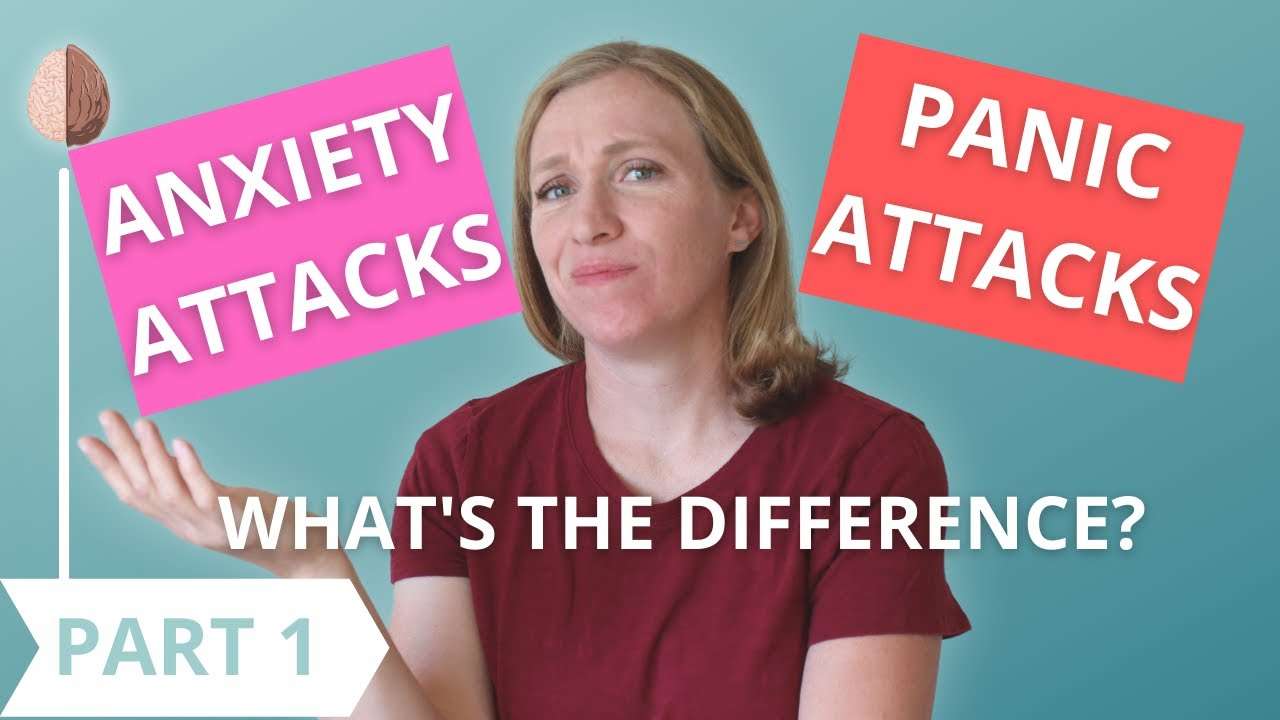“I would just like to thank you for your amazing content and online courses. Thanks to your help I am no longer homebound by crippling panic and anxiety. I went out today into a busy town and was happy, I feel safe and liberated. I have shared all my progress with my doctor and she is ecstatic about my progress and will be recommending your courses to other patients struggling with mental health. I am medication free and happy for the first time in my life. The changes are long lasting and I now can get myself out of a low without going further down the rabbit hole.”
Both panic attacks and anxiety attacks are treatable. Decreasing overall stress, working with a therapist, exercise, sleep, relaxation, meditation, and breathing techniques, and also cutting alcohol and nicotine can all help. CBT techniques can help you learn to decrease panic and anxiety attacks, but treating anxiety attacks and panic attacks require different approaches.
So let’s talk about that.
If you google how to stop a panic attack, you might get really bad advice if you have chronic panic attacks. The articles all say to try to take some deep breaths, calm yourself down, distract yourself. Look, if you’ve tried this and it worked, you wouldn’t be here. So with a panic attack, and especially with panic disorder, this is the exact wrong advice. Let me explain.
An anxiety attack comes on gradually. It’s like a buildup of anxiety that overflows, like a bathtub that’s been filling up too long. So this means the treatment is all about slowly lowering the level of the water.
So if you’re overflowing with anxiety, these are the sort of things that gradually let the water drain: slowing down, calming your body, taking deep breaths, getting present, trying the 3/3/3 rule.
Get more organized and decrease your overall stress and set boundaries. Process the stress that you can’t decrease. Writing, practicing willingness, getting support, laughing, exercising. All of these techniques can help decrease overall anxiety and prevent both anxiety and panic attacks. And they may possibly help you calm down in the middle of a panic attack.
Now, panic attacks are a different beast altogether. If you’ve only ever had one panic attack or just a handful, you can try any of these previous techniques that you want. Give them a try. Just experiment and see if they work.
But if you get repeated panic attacks, then it’s likely that trying to make your panic attacks go away is actually causing recurring panic attacks. Because, you see, panic attacks are anxiety about anxiety. They are fear of fear.
There’s this Jimmy Fallon clip where they talk about something funny that they overheard.
This one’s from @Reggie Games. He says, “I once overheard a man in a stall next to me whisper to himself, “Please, not now.”
Now, Jimmy makes a great joke of it, but I can almost guarantee that it was someone in the bathroom trying to force a panic attack to not come on, because that’s the exact mindset that causes recurring panic attacks.
You start to feel some anxiety, and then your body starts to produce some stress chemicals, which triggers some uncomfortable sensations, like a faster heartbeat or an upset stomach. And you think, “Please, not now. I can’t have this panic attack now. This would be terrible.”
And the more you try to force your body to calm down, the more messages you send to your body that you’re in danger, that anxiety and panic is dangerous and must be stopped.
So in this situation, trying to calm down your body sends a message to your brain that the anxiety is actually dangerous and it must be avoided, which makes anxiety worse.
For people with panic attacks, trying to use deep breathing actually makes the problem worse. Anything you do to try to force a panic attack to go away makes them worse, and makes them come back again stronger the next time.
So when you google how to stop a panic attack and the advice is “Try to take deep breaths,” if you have recurring panic attacks, that is probably going to make you feel worse because it’s going to feed that cycle of panic attacks.
You can learn to calm down, but it’s a paradox because acceptance has to come before change, and the technique is a little bit paradoxical. So in the next post, we’re going to talk about how the panic cycle works. And in the last post, we’re going to go way in depth on how to stop recurring panic attacks.
Check out my Free Quick Start Guide to Anxiety below for more help.
Search engine: Search for licensed therapists on Psychology Today.
How to Seek Mental Health Counseling Services outside of WPU
If you’re no longer a student or are for any reason unable to schedule an appointment with the Counseling Center please consider these basic steps to connect with a Licensed therapist in your area.
Basic Steps
1. If you have health insurance, clarify with them if you have mental health coverage.
2. Search for a therapist that meets your criteria of needs/goals.
4. Interview the potential therapist(s) over the phone or through email.
5. Schedule a first meeting to see if it is a good fit.
Cardiac coherence is when your body’s systems take on a smooth, steady, synchronized wave.
Normally your breathing, heart rate, and blood pressure all have an oscillation or wave.
Your breathing rate goes in and out. Your heart rate goes up and down. And your baroreflex — essentially your blood pressure — also goes up and down.
When we’re stressed, each of these systems is kind of doing its own thing — they’re all going off at different times.
But when you get into cardiac coherence, your heart rate, respiratory rate, and blood pressure all sync up, and they smoothly interact with each other. When they all get in sync, it’s called the resonance frequency. For most people, this is at about .1Hz. And when you do this, you’re basically telling your body “you’re safe; you can calm down,” and it tells your nervous system to turn on that rest-and-digest response.
The easiest way to achieve this is through resonance frequency breathing, which is basically slowing down your breathing to match your heart rate. You can feel it when you get this: your body feels calmer, more centered, more settled. Just writing this video reminded me to breathe more slowly, which settled me over and over.
This can get really technical, and if you want to learn more, definitely check out the work by Dr. Gevirtz. He’s put years of study into this.
Here’s an image from one of his publications showing how the breathing and heart rate get into sync. You can see the heart rate changing in this sine-wave pattern and the breathing syncing up with it, and everything just kind of smooths out. This is good. It’s good for your body and your mind.



